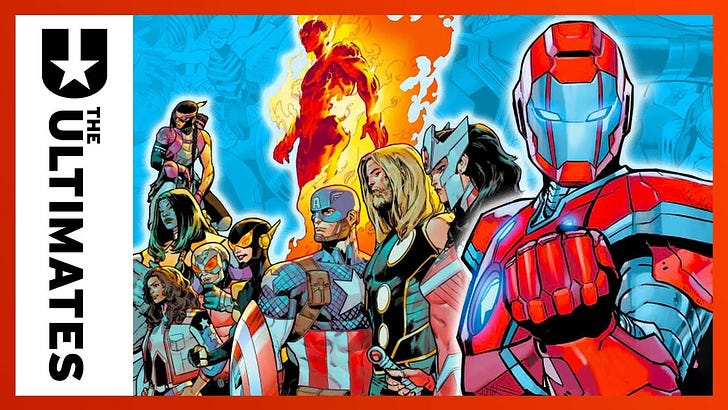I’ve been reading something from the library called Hellblazer: Dead In America. It’s one of the latest comics that focus on tours across the US of A. Frankly, I surprised myself when I found out how many comics use this plot. Alan Moore’s Swamp Thing, Peter Milligan’s Shade the Changing Man, John Ostrander’s The Spectre, Steve Gerber’s Howard the Duck, Green Lantern/Green Arrow, Superman Grounded, Deniz Camp’s Ultimates, and more. But why is this plot so often used?
A Brit’s Look At The States
A fair chunk of these stories are by British creators. It’d be fair to say these are an outsider’s look into the country they’re working in. Moore, Milligan, and Simon Spurrier all use characters who live outside the nurturing and normalizations to help their readers explore the wonders and limits of the US.
Most audiences are quick to catch onto some of the harsher realities that are in these stories. Usually through artifacts or proxies of the idea of America the average Brit would look at coming in. But the central idea of it all is the American Dream. Or rather how its oversimplification was exploited, abused, and drove people crazy. So much so, it leaves a bad influence that people have to keep dealing with.
To be honest, I’m gonna have to echo a British comic YouTuber’s catching words “this speaks more about the audience than the creators”.
Moore for one only came up with his share of this because he was shifting his focus somewhere else. Basically, just a bunch of afterthoughts made memorable. It’s why the building plot in American Gothic feels like it ends with a left turn. No commentary or satire, just a fantastic twist. Spurrier’s Dead In America feels like a response to Moore’s story. Giving that story a more satisfying conclusion in a new form.
Americans’ Critical Look
It’s also why Americans have their own ways to look at the States.
Ostrander’s The Spectre: The Haunting of America and Superman: Grounded each deal with American icons getting twisted, abused, or lose direction. So everyone goes on journeys to find where they can still fit in.
In just about every case, it’s about coming to terms with how even with new perspectives, things will always be messy in America. Symbols always renew to better represent the people living in it, but some things will last more than others. Usually that means the damage vulnerable people can’t ignore, no matter how much they want to.
Which is why Camp’s The Ultimates is so notable. The symbols here are renewed, often with more weight through subversion and meta-commentary. Both with aspects of the United States and characterizations. I’ll leave a video to explain the rest:
The Satirical Pit Stops
There’s another side to this explored in Gerber’s Howard The Duck and Dennis O’Neil & Neal Adams’ Green Lantern/Green Arrow. Not to mention Highwayman and Stray Bullets. Like before, it involves people who feel out of touch with the going-ons in the states. But maybe that’s because people have normalized insane things. Like how it’s easier to help strangers than your neighbors. Or how people who just can’t fit in feel the most weight of the absurdities surrounding them.
Why The Trip?
There are two ways to look at this plot. It’s either a time filler because creatives ran out of ideas, or it’s a way to feel less lost. Outside of your comfort zones, the things happening around you don’t seem very good. But you have go out there eventually.
At the core is becoming aware of a dream and trying to wake up. Problem is, dreams are still real. But maybe that’s why these don’t have to be downers. Dreams like all symbols renew, multiple times. They can’t always be what people want, but it can be inspirations for a newer path.


